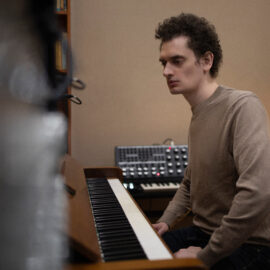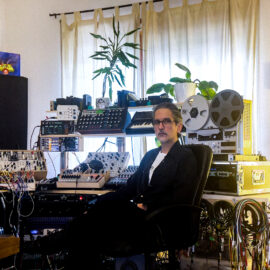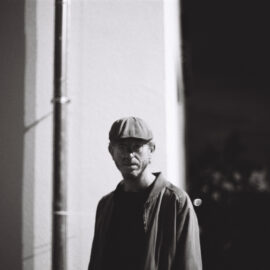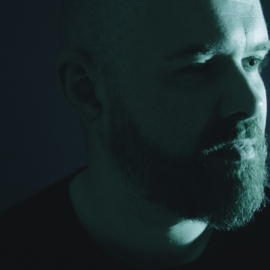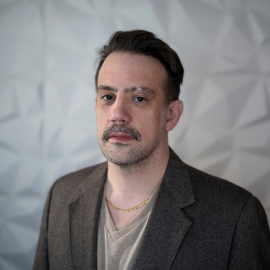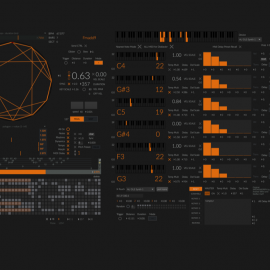The following is a conversation I had with Dennis Huddleston and Zach Frizzell, who record individually and collectively as 36 & zakè, specifically around their three-part Stasis Sounds For Long-Distance Space Travel series, which was recently concluded with the third volume. It’s a fascinating and sonically-rich project, which I’ve been enjoying since its inception, and I couldn’t wait to dive a bit deeper into its story, sound design, and, of course, the two people behind it. Enjoy!
Let’s start at the beginning. Can you tell us how this collaboration came about? How did you two first connect, and what sparked the idea of creating Stasis Sounds For Long-Distance Space Travel as a concept?
zakè: Dennis and I connected during the first year PITP was established, which led to his first full-length album for the label “The Lower Lights”. We’ve been collaborating in various ways ever since. As for “Stasis Sounds For Long-Distance Space Travel”, I believe we both had a break in our schedules and decided to explore a new project. I sent Dennis a batch of fragmented loops and drone sketches labelled “Jupiter,” which sparked the concept.
36: Jupiter, yeah! I completely forgot that. I figured after hearing the loops that Zach was a bit of a space freak like me, so it just kind of bloomed from there. The loops were soft, serene, and relaxing. Lots of space-related fiction is quite dark, but these tunes were gentle and developed into beautiful, organic pieces. The concept of using music as a kind of background noise to relieve anxiety for a fictional long-distance space journey just evolved naturally, and Zach seemed to like it too!
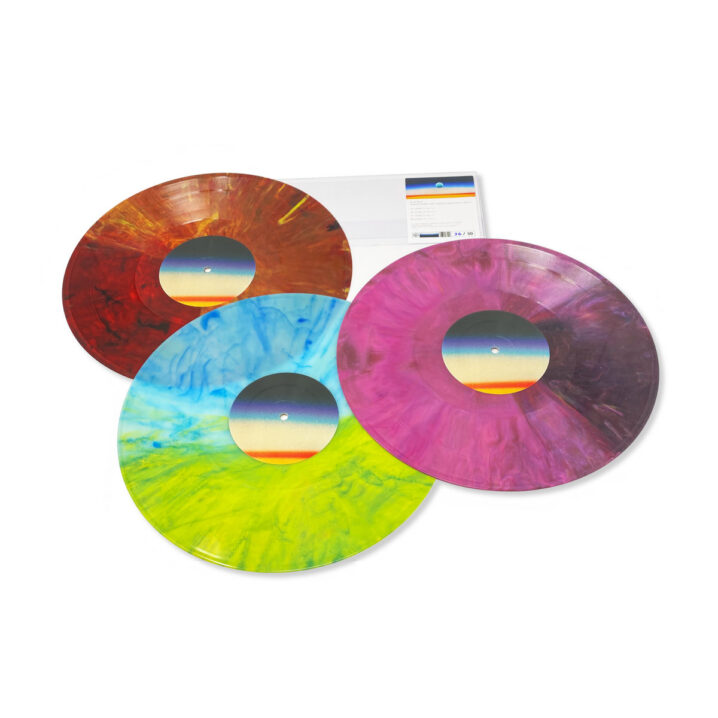
The trilogy is rooted in the classic sci-fi concept of long-duration space travel in stasis. Were there particular science fiction stories, films, or real scientific ideas that inspired the atmosphere and narrative of Stasis Sounds? How did you go about translating the idea of a deep-space “hyper-sleep” journey into an ambient soundscape?
zakè: Dennis and I have both always been fascinated by NASA and space exploration. I have loved space films since I was young, and that shaped the atmosphere of the Stasis Sounds trilogy. The idea of long-duration space travel in stasis or hypersleep felt like a natural fit for ambient music. We approached it by using slow loops, minimal structure, and wide open textures to capture the sense of drifting alone through deep space.
36: It’s not about space travel per se, but I really love the concepts behind the video game SOMA. The ending to that game is a real gut punch, but it’s a beautiful game, even among all the tragedy and horror. Humanity recognises its end, transcends the body, and survives through technology. It’s so bittersweet, and I had images from that game in mind when making the music, definitely. Beyond that, I love Heinlein, Asimov, and all the hard sci-fi classics. In terms of non-fiction, our world will eventually be engulfed by our own sun, so we’d better have a backup plan in place, on the off-chance that we survive as a species to see it.
The first volume was released in January 2020, coinciding with a period when the world was in lockdown. Were you surprised by the reaction to Stasis Sounds? How did releasing that album during a global quarantine shape the feedback you received, and did that response influence your approach to volumes II and III?
36: To say it was a surprise is quite an understatement! It absolutely blew up, almost immediately, and continues to be the best-selling record either of us has put out, right, Zach?
zakè: Oh, for sure, the best-selling. It is truly hard to believe! Man, even today, I still can’t believe the reception to this. It’s hard to wrap my head around how this album became so celebrated. The feedback was heartfelt, deep, and really moving. I think a lot of people connected with the nostalgic tones, the concept, the sense of escape. It felt like people were saying, “take me back to something familiar”, or “maybe just take me somewhere else”! We still cannot keep the first one in stock…
36: Yeah, man, it has had something like 10 represses! I don’t think people realise just how unusual that is, especially for an independent label, in the current music climate. For a record to get a single repress is a success, but this thing just kept selling out the moment we pressed more. The place that manufactured it literally wore out the master stampers, so we couldn’t do any more represses from it, even if we wanted to.
zakè: Ha, exactly! If we ever decide to press again, we start from scratch!
36: Even though it was a horrible time for the world, it does bring me a lot of joy to know we made something that resonated with so many people, globally, during the COVID lockdowns. People needed an escape from their four walls – mentally, if not physically – and this record apparently caught lightning in a bottle and provided exactly that.
zakè: For sure, it means a lot to know that something we created brought comfort to people during such an uncertain period. There was so much fear, isolation, and stillness, and somehow this record gave people a sense of space and calm beyond their immediate surroundings.
36: In time, I do hope it’s known as more than just “that COVID record” we made, because even though it was written during an awkward, horrible moment in all our lives, it is an inspiring record, with a positive message, hopefully transcending the period it was made.
The Stasis Sounds series isn’t just cold space ambience; it conveys a lot of human emotion. The notes mention themes of “hope, uncertainty, loss, humility, and wonder” when journeying to new worlds. How did you incorporate these emotional undercurrents into the music? Did you have a narrative or mental image in mind (for example, the loneliness of leaving Earth, the hope of a new beginning) while composing, to ensure those feelings come through in the sound?
zakè: That’s a deep question and one worth unpacking. For me, the idea of new worlds lives in the mind. When I encounter themes like hope, loss, and uncertainty, it often triggers an internal response. More often than not, it is a flight. Space becomes a metaphor. It is vast, unknown, and terrifying, but also full of potential. Facing things here on Earth can be a way of showing reverence for what space represents.
You do not need a shuttle to start over. A new beginning can come from within. Volume II especially carries that weight. There is a complexity in those pieces, almost a quiet sadness. It feels like the moment where a decision has to be made. That is where my head was while working on it. Dennis might have a different view, but that is the place I was coming from.
36: Agreed. You can look at it literally, as this cool sci-fi thing, but it’s also a record doused in introspection. When you’re asleep, or just alone with your thoughts, there’s no hiding. Growth comes from understanding your flaws, your fears, your weaknesses, then putting in the work to move past them. The whole trilogy is like therapy for me.
zakè: Absolutely agree with you, D. Stasis Sounds has been one of the most transformative and meaningful series of my musical journey. It helped shape me in so many ways, both creatively and personally.
36: I think that’s also a big part of why it became such a success. It’s open and ambiguous enough to let people really go deep with it. They can find their own meaning in it. When I hear all the individual stories from people around the globe, and how it helped them in various ways with their lives, it’s an incredibly satisfying feeling. We made this music alone, in our studios, but it became something much bigger than just us.
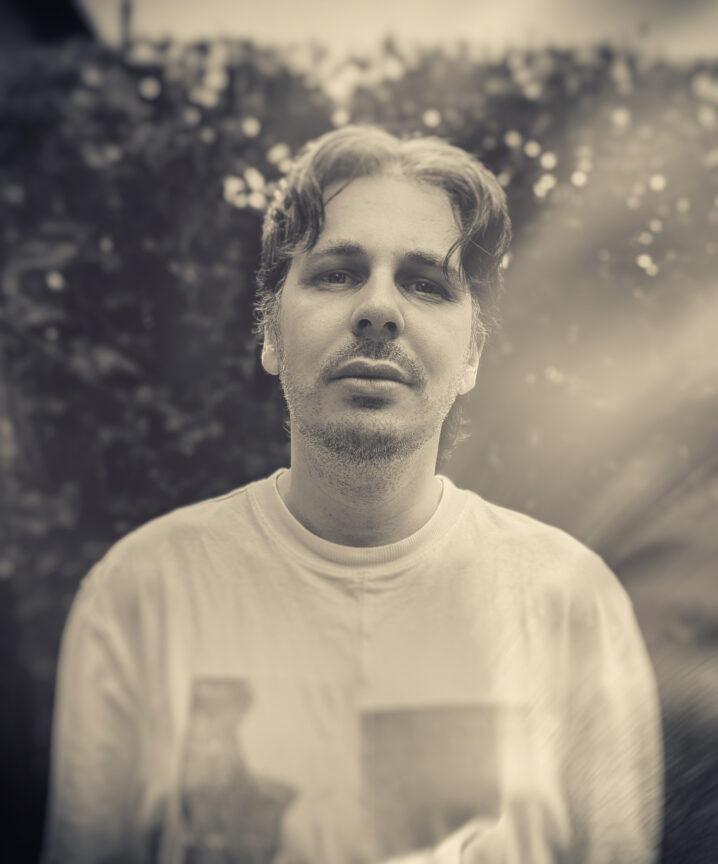
Each instalment of the trilogy has a unique structure. How did you decide on these formats for each release? Were these structural choices driven by the story you wanted to tell at each stage, or by practical/music considerations (like vinyl length constraints or creative exploration)?
36: In terms of format, obviously, the limitations of vinyl were a factor, at least for the first record, since the tracks are quite long, and we have a finite amount of space on each side to work with. I think it was originally penned as an EP, just featuring the first 4 tunes, but we returned to it after we finished them, which is where the idea of additional “programs” came to fruition, to include as extras on the digital version, plus eventually a cassette tape and CD. These are essentially hypersleep DLC programs, which let the listener hear sounds from Earth, as a kind of grounding experience while floating in the great void of space. Something to remind them of home, perhaps.
I also really loved Zach’s original loops, which is why I suggested we include them as longform tracks, to close out the first record. One of the tunes, Reduction 3, is such a gorgeous track, and it felt right to let the original 20+ minute tune be the final track. It was the first tune I heard, so it was only fitting that this was the one to end it. Kind of full-circle.
zakè: Reduction 3 still gives me butterflies. It is so stripped down, with minimal added textures. Just a beautiful, endless loop. That may have been the track that sparked our excitement and set the tone for everything that followed. I believe it was the first long-form piece we both truly connected with. I am really glad we focused on a short EP and just aimed to make the best sounds we could, keeping it simple in the beginning. Like D said, it took on a life of its own once those first tracks were finished. The concept had so much room to grow, and expanding it into these additional programs gave us a whole new space to explore. I love the idea of those pieces functioning like hypersleep programs, something familiar to hold onto while floating through the unknown. It was the perfect start to the series.
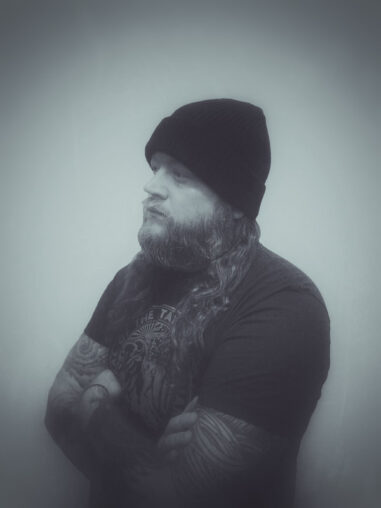
What does your collaboration process look like in practice? Do you exchange ideas and DAW project files remotely, build tracks layer by layer together, or divide duties for different sections? Walk us through how a Stasis Sounds piece might go from initial idea to final mix between the two of you.
zakè: By the time this project came around, I think Dennis and I had a solid understanding of each other’s sound and a deep respect for each other’s approach. We both worked pretty independently at first, building out ideas and textures on our own, then brought everything together to shape the final pieces. Dennis is a mixing chemist. He would take the raw materials and turn them into these beautifully balanced arrangements, which I honestly never imagined could sound that good. The process felt natural and fluid, like fitting the right pieces into place. Very few disagreements, if any. Easily one of the most seamless and enjoyable collaborations I have been a part of!
36: For the first record, Zach sent me the initial loop, and I then added harmonies, melodies, and anything else I felt enriched the tune, without dominating it or turning it into something completely different. We changed positions for the second record, with the initial loops created by me, which Zach then embellished. For the third, we switched again, though this record was generally more complex, and we used each other’s stems/bounces to change things more dynamically, allowing the arrangement to grow organically into the final form. It was a true collab, in this sense, because none of the tracks could have turned out the way they did without each of us gently pulling them into interesting new directions, while still recognising the grander picture.
zakè: Totally agree. Each record had its own rhythm in how we worked, and that shifting dynamic kept things fresh and pushed us creatively. On the first one, I laid down the core loop with a simple intention, and Dennis built on it with a strong sense of harmony and melodic structure. He elevated the piece without crowding it, which takes real musical restraint and understanding.
For the second record, when Dennis sent over the initial ideas, I approached them with the same mindset, adding elements that supported and enhanced what was already there. By the time we reached the third, the process had evolved. We were bouncing stems back and forth, reshaping parts, rebalancing textures, and letting the arrangements unfold naturally. It felt like a complete collaboration. The technical back and forth, from EQ choices to reverb treatments to layering decisions, all played a role in shaping the final pieces. These tracks exist the way they do because we each pulled them in different directions and trusted the process.
36: It was effortless, and that’s also why it works. No stress, no BS ego, just two people, separated by an ocean, finding some common humanity, trying our absolute hardest to make something beautiful and timeless.
zakè: EGO DEATH. I took his album, which shares the same name, seriously!
36: Ha! Alas, you’ll never truly take individual ego out of the equation, but when two people are on the same wavelength and see the bigger picture, it doesn’t matter. We became one soul. I’ve been lucky to have some really good collabs, and working with Zach is as easy as it gets. No stress, whatsoever. He looks like this really dangerous biker gang guy, but in reality, he’s the softest, most thoughtful person I know, making utterly gorgeous music, straight from the heart.
zakè: Honestly, “Tomorrow’s Explorers” and “Sine Dust” by Dennis were like a cheat sheet for me. I’ve always adored those albums, and I simply followed my instincts to create something that could hopefully exist alongside works like those.
Can you talk about how some of these signature sounds were created? Did you incorporate actual radio transmission noise or field recordings for texture? Any particular synthesis or sound design techniques you’re proud of in these tracks?
zakè: I use actual radio transmissions in 99% of all tracks, but no nefarious sounds buried in the mix, ha! Field recordings always seem to find their way in, but what I’m most proud of is how much more subtle they are here compared to my solo work.
Dennis and I both admit we are not gearheads, so creating something like Stasis Sounds feels like an accomplishment in itself.
Big sound, minimal gear. We relied on our archaic methods and unorthodox mix of software and hardware, trusting the process every step of the way.
36: I just tried to use sounds that complemented Zach’s. I didn’t know what he used to make them, nor do I really care, if I’m being honest! Music, for me, is about the emotion of the sound, not how it was made. I know other producers love all the nerdy gearhead stuff, and I honestly get that, but it means very little to me in practice. I can’t even remember any of the synths I used on the first record, and the patches are long-gone anyway, since I built a new studio earlier in the year. I will say, at least for the third record, since that is the one still fresh in my mind, I used Synplant2 a lot, sampling hardware-based synths with Genopatch, not to mimic them, but to create strange, alternative versions of the sound, which I couldn’t imagine solely by myself. Synplant2 is so good for this. You can intentionally re-create sounds badly, which sometimes turns them into something even more beautiful and interesting. This tends to be how I work in the studio. Being spontaneous, chaotic, letting chance take the lead. It’s way more fun than just going in with pre-planned, hyper-prepared ideas, which feels more like ticking checkboxes. The process of making music should be fun, not work.
I also got sent this really cool multi-effect VST called Airspace, by Mode Audio. Fun fact, they reached out to me because they loved the first Stasis Sounds record, so I decided to give it a try, and not just because the guy in charge was very good at rubbing my ego! I’m glad I did, because it’s a great piece of software, and lets you make really beautiful, expensive, lush-drenched waves of sound, really easily. I used that VST extensively on the third record. It’s quite amusing how our record helped inspire the VST, which then went on to inspire us directly with the actual music. Life has a habit of being circular like that.
The music across this trilogy invites a sort of deep listening and even serves a meditative purpose. Do you think about the listener’s experience (for example, using it for sleep, meditation, or creative work) when you compose? And have you heard of any interesting use cases from fans – like people using it to focus, to cope with stress, or other personal routines?
zakè: Invites? Absolutely—the sleepier the better, if you ask me. As with all my albums, I aim for something deeply meditative, but not in a typical ‘yoga spa’ kind of way. I want the music to encourage stillness and reflection, offering space for rest or creative thought, without being overly polished or predictable. I’ve had dozens of people reach out to share how this album has helped them tremendously with anxiety and sleep. One especially memorable moment was hearing from a New York Times best-selling author who told us she listened to Stasis Sounds while writing one of her novels, which also became a best-seller. Hopefully she’ll let us know if it ever gets turned into a movie—ha!
36: Hopefully, she sends us some of her royalties, too!
My favourite Stasis Sounds story is about a new father who played the record for 12+ hours a day, on loop, to help his son sleep. I only found out about it when browsing my Spotify stats, where there was this playlist, with one listener, constantly listening to the record, every single day, for over a year. I made a social media post about it, and to my absolute astonishment and joy, the guy in question responded, mentioning how it’s the only thing that gets his son to sleep. I found it so cute, but I also feel a bit worried for the kid, because listening to a single record on repeat for that long means he’s going to grow up as either the chillest human being who ever lived, or he’ll turn into a serial killer. No middle ground!
We get fun, inspiring, interesting stories like this all the time. It’s so enjoyable to read them. It’s the best part about releasing music, in my opinion. Once it’s out there to the world, we can’t control it. Nor should we want to control it. Music, at least music that was written from the heart, will always resonate with other people, and their stories are just as valid as the people who made it. This series of records crossed over from the usual ambient crowd and reached people who wouldn’t normally listen to this sort of music. It sent many of them down an ambient rabbit hole. They’ll probably discover all sorts of weird and wonderful things about themselves as a result… And we want to hear all about it.
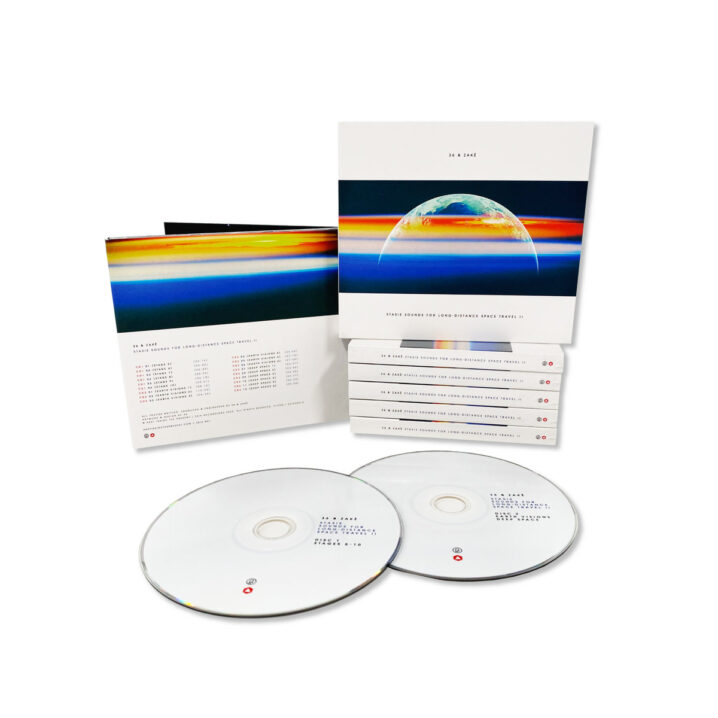
Have you considered translating Stasis Sounds For Long-Distance Space Travel into a live performance or audio-visual experience? For example, a concert in a planetarium, an installation, or a film score? Since the music is so expansive and layered, what do you think a live or surround-sound rendition would be like, and is that something you’d be interested in doing? Conversely, do you feel this project is best experienced in solitude over headphones rather than in a live venue?
36: Zach would probably love to do it, but I’m a spoil-sport who hates performing live, so he’d have to do it without me!
zakè: I’d never say never. If the right space, crowd, and mood are aligned, anything is possible. A planetarium or immersive installation would be a perfect setting for something like Stasis Sounds. That said, getting two guys in their 40s who don’t typically perform live up on a stage is another story. This music was really made for solitude, for headphones, for those quiet, introspective moments. But in the right environment, a live or surround-sound experience could be something truly special. Something like Envelop, run by Christopher Willits, would be a dream scenario. So chances are as good as us actually inhabiting the Blue New World.
36: Yeah, Zach nailed it. This is very personal music, and at least for me, it’s most impactful on headphones, alone. I’m sure if I eventually did grow some balls and get over my live performance anxieties, Zach and I could make it work. But it’s not the original intent, and I do feel something would be lost with a bunch of awkward middle-aged dudes all crammed into a room, staring at the ceiling. Nothing is more immersive than the space inside your own mind. I prefer to keep the music there, personally.
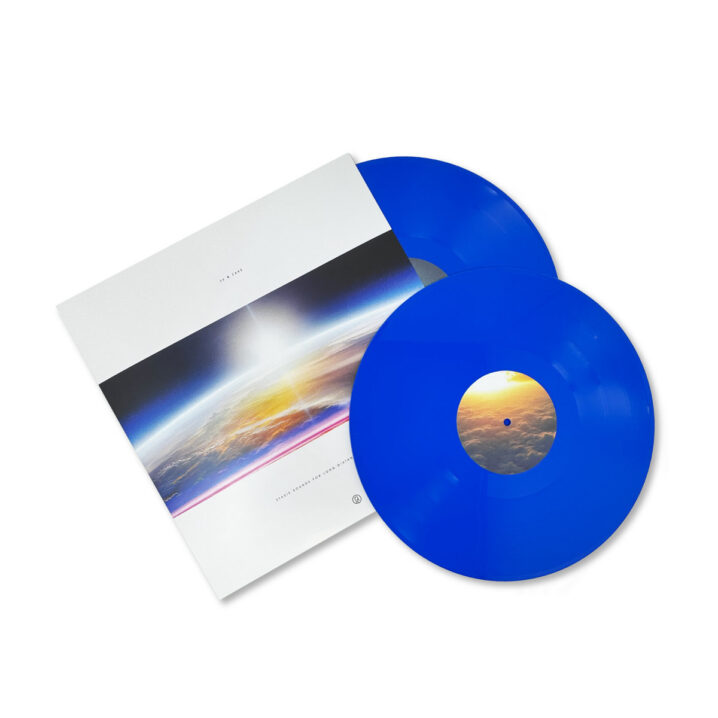
Now that your five-year interstellar voyage is complete and the trilogy has reached its Blue New World, what’s next for each of you? Do you plan to collaborate again on new material (either a sequel, a different concept, or maybe something completely different in style)? Are there any upcoming solo projects or other collaborations on the horizon you’re excited about?
zakè: For me personally, I will continue to release way too much. Going against the advice of many, while giving the middle finger to typical release schedules. For Dennis and me, you bet. When/how, we will know when we know! One project that has been done for quite some time will finally see a release in September. 22 tracks. This time I asked friends to supply sounds, field recordings, melodies, etc., featuring an all-star ambient cast, including Lucy Gooch, William Basinski, Benoit Pioulard, Bvdub, ASC, and many more…. It’ll be a 2xCD and, of course, the infinite digital.
36: The Stasis Sounds voyage is over. I feel we said everything we needed to on those records. The rest is for the listener to continue in their dreams. Zach and I will almost certainly collaborate again, though. We’re brothers in sound, and our trajectory will inevitably cross once again. It’s just about finding the right idea, and as always, finding the time to make it happen.
In terms of my solo output, I have just finished a new record, which will be my first release on a superb UK-based label I haven’t previously worked with. I always try to do something different with each album I release, and this is no exception. It’s a vivid, colourful, hyper-saturated spectrum of synthesiser-focused music, with a kind of energy I haven’t explored before. I’m looking forward to people getting the chance to hear it.
